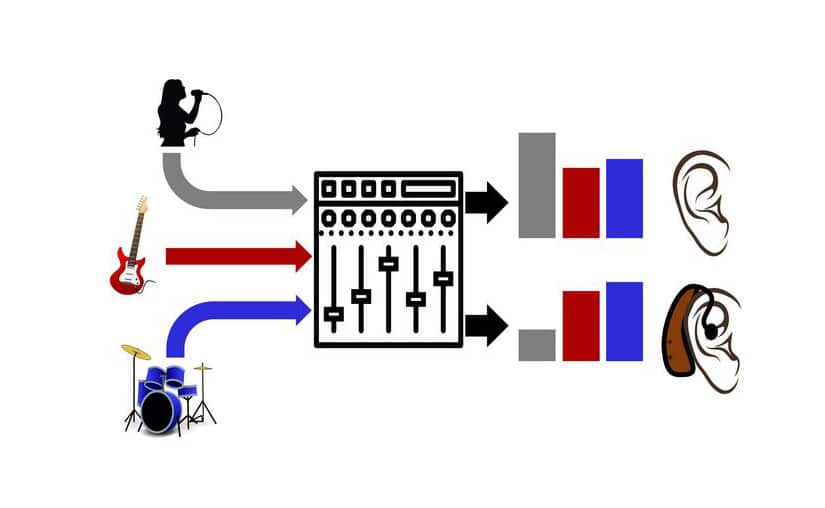Researchers from the University of Oldenburg studied the impact of hearing loss on subjects’ enjoyment of music by playing different music mixes to listeners with and without hearing loss. Details of the new study were published in JASA, on behalf of the Acoustical Society of America by AIP Publishing.
Modern pop or rock music is built from several individual tracks, such as vocals, instruments, and synthesized sounds, all recorded separately and mixed to make the final product. To cater to listener preferences, this mixing might entail raising or lowering the volume of one of the tracks or amplifying the high- or low-frequency sounds.
“Mixing is tailored to suit the needs of normal-hearing listeners,” says author Kai Siedenburg. “We wanted to explore whether there are actually differences in mixing preferences between normal-hearing and hard-of-hearing listeners.”
The researchers found that those with hearing loss preferred louder lead vocals, higher frequencies, and sparser mixes with fewer frequencies overall.
Further reading: What We Still Don’t Know About Music and Hearing Aids
“Generally, hard-of-hearing listeners have reduced frequency selectivity and impaired level perception,” says author Aravindan Benjamin. “They tend to prefer louder levels of lead vocals compared to normal listeners.”
Previous research from the group has found that music steadily shifted to quieter vocals and louder instrumentals leading up to 1975 and has remained there, meaning today’s music may be less accessible to those with hearing loss.
Use of hearing aids can remedy these issues to a degree, but they are not available to many people with hearing loss and come with their own set of problems. Some users might prefer to adjust their music with software rather than listen to the default mix through hearing aids.
“Getting good headphones, for example, and then playing around with the equalization might be a better approach than trying to squeeze everything through the hardware of the hearing aid,” says Siedenburg.
Ultimately, the biggest difference must come from the production side. Sound engineers with access to the individual tracks can make a big difference by making their work more accessible to millions of listeners.
“One approach could be to offer a couple of different mixes, one for the general public and one for people who are moderately hard of hearing,” says Siedenburg. “Certain adjustments to the mix might help to cater to the needs of this group of people in a better way.”
Featured image: Listeners with hearing loss can struggle to make out vocals and certain frequencies in modern music. Photo: Aravindan Joseph Benjamin





